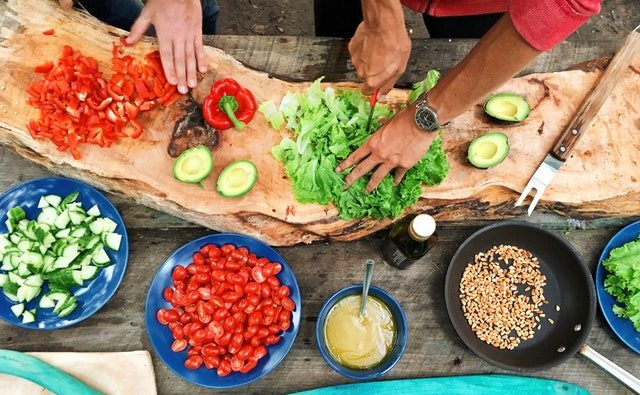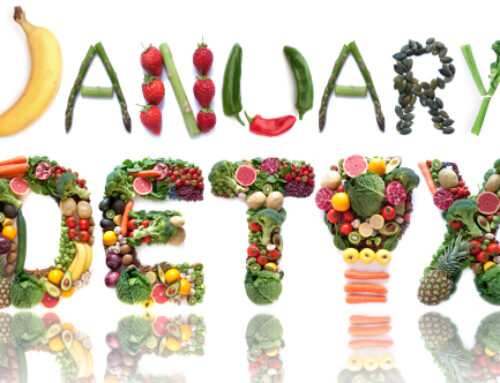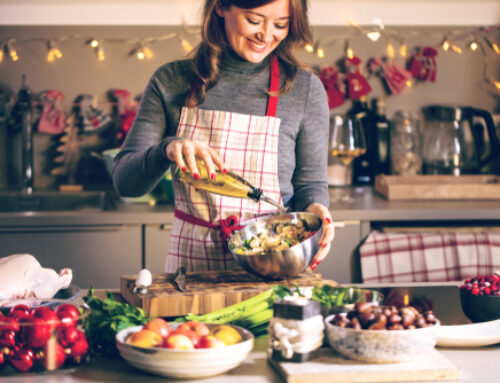It is well established that proper nutrition can have profound improvements on your health. Many popular diet programs, including the Atkins, FODMAP, Paleo, Whole 30, and Keto diets, all teach a restriction of processed foods, high-carbohydrate foods, and high-sugar foods. Hopefully we are now past the point of having to teach the public that fast foods, soda, pizza, cereal grains, etc. are bad for our health and that real food should make up the majority of your diet.
 Image credit:
Image credit:
Diet Comparison: What’s the Difference Among Keto, Paleo, Atkins, and Whole30? https://ketologic.com/article/diet-comparison-whats-the-difference-among-keto-paleo-atkins-and-whole30
Many of the popular diet plans of today teach some common foods to include, including healthy fats, green vegetables, quality protein, and probiotic foods. With just a few exceptions, most of the “superfoods” are friendly to whatever plan you are following. These “superfoods” offer some very important nutrients that can power-pack your meals and snacks, and further enhance a healthy eating pattern.
Here are a list of the top 10 superfoods to include in your next meal plan!
1. Berries: High in fiber, berries are naturally sweet, and their rich colors mean they are high in antioxidants and disease-fighting nutrients.
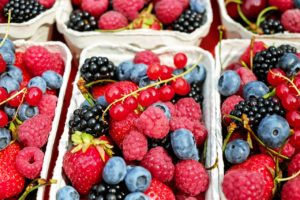
How to include them: When berries are not in season, it is just as healthy to buy them frozen. Add to yogurt, cottage cheese, protein packed smoothies, or eat with a high protein meal.
2. Fish: Fish can be a good source of protein and omega-3 fatty acids, which help prevent heart disease.
How to include it: Buy fresh and frozen. Fish with the highest omega-3 content are salmon, tuna, mackerel, herring, trout, anchovies, and sardines.
3. Leafy greens: Dark, leafy greens are a good source of vitamin A, vitamin C, and calcium, as well as several phytochemicals (chemicals made by plants that have a positive effect on your health). They also add fiber into the diet.
How to include them: Try varieties such as spinach, swiss chard, kale, collard greens, or mustard greens. Throw them into salads or sauté them in a little olive oil. Place them on the grill after you have covered them with olive or coconut oil. You can also add greens to soups and stews.
4. Nuts: Hazelnuts, walnuts, almonds, pecans: nuts are a good source of plant protein. They also contain monounsaturated fats, which may be a factor in reducing the risk of heart disease.
How to include them: Have a handful as a snack. But remember they are calorically dense, so limit to a small handful. For a salad boost lightly toast them in the oven and place them on a salad or sautéed vegetable medley. Try the various types of nut butters such as peanut (technically a legume), almond, or cashew.
5. Olive and Coconut Oils: These oils are a good source of vitamin E, polyphenols, and monounsaturated fatty acids, which help reduce the risk of heart disease.
How to include them: Use to sauté vegetables, cook eggs, in salad dressings, and even in healthy high fat snacks. You might also try this yummy and healthy high fat snack:
Peanut Butter Fat Bombs
Chocolate layers
- 10 oz Lily’s dark chocolate (Sugar-free made with stevia)
- 5 tbsp Coconut oil (divided)
- 1/2 tsp Vanilla extract (optional, divided)
Peanut butter layer
- 3 1/2 tbsp Peanut butter (creamy)
- 2 tsp Coconut oil
- 4 tsp Powdered erythritol (to taste)
- 1 1/2 tsp Peanut flour
- 1/8 tsp Vanilla extract (optional)
- 1 pinch Sea salt (optional, to taste)
Line muffin pan with parchment paper liners (or candy cups).
For the bottom chocolate layer, heat half of the chocolate (5 oz, 142 g) and half of the coconut oil (2 1/2 tbsp, 35 g) in a double boiler on the stove, stirring frequently, until melted. (You can also heat in the microwave, stirring at 20 second intervals.) Stir in half of the vanilla (1/4 tsp, 1mL), if using.
Fill the bottom of the parchment cups evenly with chocolate (about 2 tsp (10 mL) in each). Freeze for 10 minutes, until at least the top is firm.
Meanwhile, for the peanut butter layer, heat the peanut butter and coconut oil in a double boiler or microwave (same method as step 2). Stir in the powdered sweetener, peanut flour, vanilla (if using), and sea salt (if using), until smooth. Adjust sweetener and salt to taste if desired.
Spoon a teaspoon of peanut butter mixture onto the center of each cup over the chocolate layer. It will spread a little into a circle, but not quite reach the edges, which is what you want. Freeze for another 10 minutes, until at least the top is firm.
Meanwhile, make the top chocolate layer. Heat remaining chocolate (5 oz, 142 g) and remaining coconut oil (2 1/2 tbsp, 35 g) in a double boiler or microwave (same method as step 2). Stir in the remaining vanilla (1/4 tsp, 1 mL), if using. Pour the chocolate into the cups, over the peanut butter.
6. Cacao: Raw dark chocolate or cacao is high in antioxidants, reduces depression, aids in weight loss, is an aphrodisiac, decreases hypertension, and promotes improved brain function. This is not just your average chocolate bar, cacao is only found in small amounts in typical chocolate candy bars. Cacao is a bitter tasting chocolate that can be eaten raw or used in healthy recipes.
How to include it: See the fat bomb recipe above for one great way to use cacao.
7. Probiotic Foods: Many fermented foods or probiotic foods are known as an important source of good bacteria for the gut. These “good bacteria” can protect the body from harmful bacteria, aid with digestion, produce important brain neurotransmitters, and manufacture many vitamins. Anyone with chronic digestive or inflammatory conditions can benefit from probiotic foods.
How to include them: Try eating more yogurt, but watch out for fruited or flavored yogurts, which contain a lot of added sugar. Buy plain yogurt and add your own fruit. Try kombucha tea, sauerkraut, kimchi, kefir, or even pickles for a larger variety of probiotic bacteria.
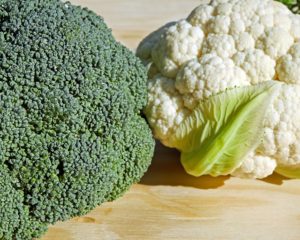 8. Cruciferous vegetables: These include broccoli, brussel sprouts, cabbage, cauliflower, collard greens, kale, kohlrabi, mustard greens, radishes, and turnips. They are an excellent source of fiber, vitamins, and phytochemicals including indoles, thiocyanates, and nitriles, which may prevent against some types of cancer. These foods also serve to feed the good probiotic bacteria found in the gut.
8. Cruciferous vegetables: These include broccoli, brussel sprouts, cabbage, cauliflower, collard greens, kale, kohlrabi, mustard greens, radishes, and turnips. They are an excellent source of fiber, vitamins, and phytochemicals including indoles, thiocyanates, and nitriles, which may prevent against some types of cancer. These foods also serve to feed the good probiotic bacteria found in the gut.
How to include them: Steam or stir-fry, adding healthy oils and herbs and seasonings for flavor. Try adding a frozen cruciferous vegetable medley to soups, casseroles, and pasta dishes.
9. Legumes: This broad category includes kidney, black, red, and garbanzo beans, as well as peas. Legumes are an excellent source of fiber, folate, and plant-based protein. Studies show they can help reduce the risk of heart disease. Those looking to lose weight need to eat these foods in moderation.
How to include them: Add to salads, soups, and casseroles. Make a chili or a bean based spread such as hummus.
10. Tomatoes: These are high in vitamin C and lycopene, which has been shown to reduce the risk of prostate cancer.
How to include them: Everyone knows you can add tomatoes to a salad or healthy wrap. Remember though to use them in stews, soups, or chili. You can also sauté them lightly with squash, zucchini, and garlic in olive oil. Lycopene becomes more available for your body to use when tomatoes are prepared and heated in healthy fats such as olive oil.
Above all, make sure that you are being intentional with your nutrition. If you think that you are eating healthy, try writing down a food log for a week. The simple act of recording your nutritional intake will act as a test of how well you’re doing. If you find yourself feeling guilty for writing something down, perhaps you should not have eaten it. Try recording your food log for longer than a week to look for patterns of good/poor decision making.
When you become more intentional with what you are eating you will find your goals more attainable.

Daryl C. Rich, D.C., C.S.C.S.

